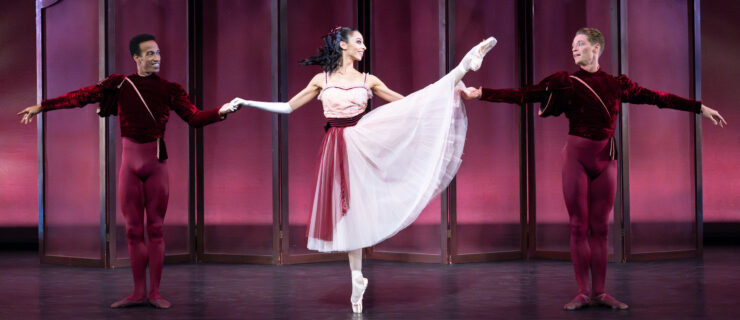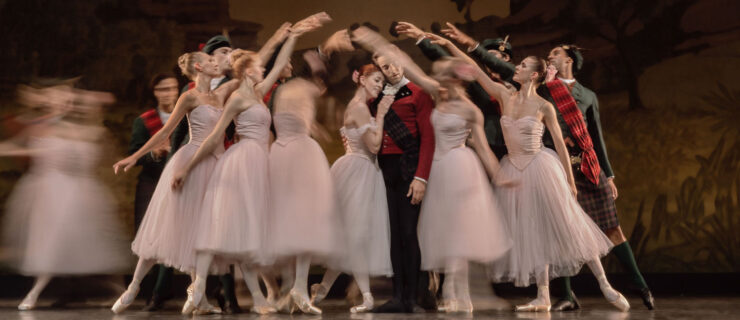Ask Amy: Dance Through Doubt
I recently graduated from an intense program with a BA in dance that left me feeling burned out. I think I may be done dancing but would feel guilty quitting. How do I decide? —Joanna
Sometimes, the endless sacrifice and dedication that dance requires can get to be too much. I’ll admit, I’ve considered quitting during periods of deep discouragement, disillusionment or injury. And because being a dancer is such an integral part of our identity, it’s natural to feel conflicted when your heart’s not in it anymore.
Give yourself time; ride out these feelings for a while before you quit altogether. Often, dancers think career decisions have to be all or nothing, especially since they are short. But if you need to take a break, do that. It doesn’t mean you’ve given up.
While I don’t recommend getting completely out of shape, explore other interests. Take open dance classes in a low-pressure environment for a while so that they feel less like a job requirement. Trust me, it’s easier to rekindle your passion when you dance solely for your own enjoyment, rather than to impress a director, teacher or college professor. That’s what helped me when I was at my lowest point, and I eventually came to the conclusion that I wasn’t ready to stop.
Of course, you may decide that you’re not interested in pursuing a dance career. And that’s okay! While you may feel like you’re letting people down, remember that this is your life. There’s a big world out there, and it’s full of possibilities.
My grand plié in second position is so shallow that it looks more like a demi-plié. I think it may be due to a restriction at the front of my ankles. Is there any way I can get a deeper plié, or am I stuck with it? —Jillian
The majority of shallow pliés are caused by tight calf muscles and Achilles tendons, which regular stretching can remedy. But a small percentage of dancers develop a bony ridge of calcium deposits or bone spurs along the bottom edge of their tibia or along the front of their ankle bone. This inhibits movement. “It’s bone hitting against bone,” says Dr. Alan Woodle, foot and ankle specialist at Pacific Northwest Ballet. Another cause could be the shape of your ankle bone, or talus. When viewed from the side, the talus normally slopes downward from the center of the joint towards the floor. “That angle allows you to plié from the front of the ankle,” says Woodle. Some dancers have a horizontal talus, which lacks that slope, which means they experience a decreased range of motion.
Does that mean you’re stuck with a shallow plié? Short of surgery, yes—but adjustable heel lifts can help. Woodle recommends Sorbothane heel lifts (available from Amazon). “Heel lifts tilt the whole ankle bone downwards, giving an increase in range of motion in front of the ankle,” says Woodle. “They move the bony blockages away from one another, so you feel like you can plié deeper.” Try stacking two ¼quarter-inch lifts under both heels, and sew a ½half-inch strip of elastic along the back upper edge of your technique or pointe shoes to prevent them from slipping off. Wearing heel lifts may tighten your Achilles tendons, so be sure to do regular calf stretches.
I always psych myself out thinking each audition is the be-all and end-all of my dance career. How can I keep things in perspective? —Angie
A surefire way of making yourself anxious before an audition is to think of it as a life-or-death situation. It’s easy to get wrapped up in the “idea” of an audition: hundreds of dancers clamoring for one position, the intimidating director at the front of the room who’s ready to dismiss you at the first shaky pirouette. And, of course, getting rejected can feel like the ultimate judgment of your abilities. But an unsuccessful audition—or a string of them, for that matter—doesn’t necessarily mean you’ll never make it into a company. In fact, most dancers attend multiple auditions before landing a contract.
It’s easier to approach an audition acknowledging that much of it is out of your control. Keep in mind that directors see hundreds of dancers a year, and many factors go into their decisions that have nothing to do with you personally. I’ve had auditions that didn’t pan out because of my height, or because my movement quality didn’t match that of the other company dancers. Frustrating? Very. But if I took it personally I would have quit a long time ago. Arrive prepared and hope for the best—and be ready to keep moving forward if necessary.





